|
Previous work with rats has shown
that positive results from left ventricular aneurysm repair
are short term due to left ventricular remodeling but can
be maintained longer with postoperative use of an angiotensin
converting enzyme-inhibitor drug. In the current work, postoperative
administration of atrial natriuretic peptide (ANP) had beneficial
effects at 4 weeks after surgery on left ventricular remodeling,
function, and fibrosis. The findings suggest that intravenous
infusion of ANP may be helpful clinically during the postoperative
period.
Left ventricular aneurysm repair is designed
to decrease stress on the ventricular wall and improve left
ventricular function. Previous work with rats has shown that
positive results from repair procedures are short term due
to ventricular remodeling; results can be maintained longer
with postoperative use of an angiotensin converting enzyme-inhibitor
drug.
In the current work, Dr. Tsuneyoshi's group decided to test
postoperative atrial natriuretic peptide (ANP) based on its
inhibitory activity against the renin-angiotensin system and
against post-myocardial infarction ventricular remodeling,
as well as its well-known natriuretic and vasodilatory effects.
The research model uses rats that have developed chronic
ischemic cardiomyopathy with LV aneurysm 4 weeks after ligation
of the left anterior descending artery. The repair procedure
involved plication of the aneurysm.
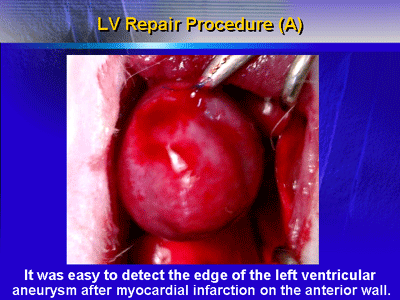
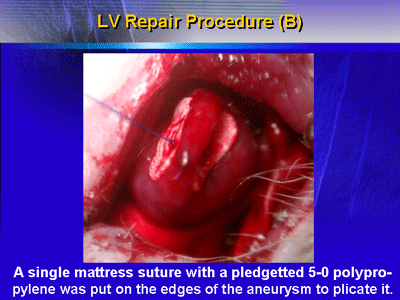
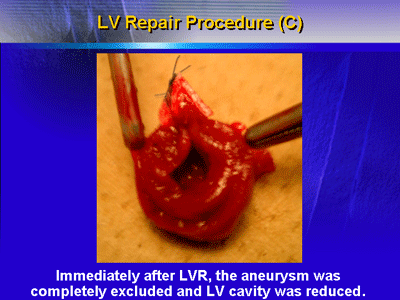
Afterward, rats (15 rats per group) were randomized to intravenous
infusion of ANP (0.5Ęg/kg/min, Carperitide, recombinant alpha-hANP)
or of normal saline. Both infusion treatments were given for
4 weeks via osmotic mini-pump. Cardiac evaluations were done
over the 4-week treatment period and at its end for both groups
of rats.
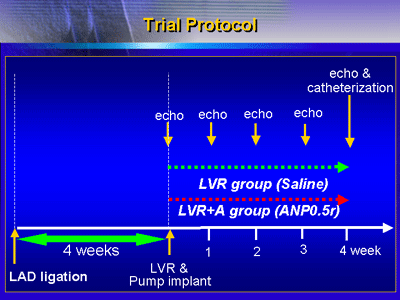
There were no significant differences between treatment groups
in systolic blood pressure or heart rate.
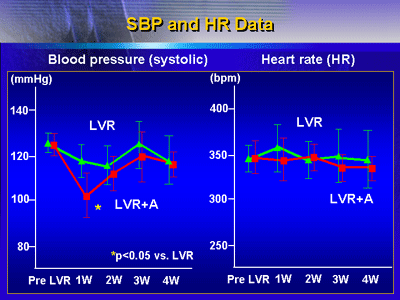
The anticipated appearance of re-dilatation in the left ventricle
was observed. However, ventricular re-dilatation in the ANP
group was significantly milder than that seen in the saline
group. Moreover, an akinetic segment gradually increased in
the saline group but remained unchanged in the ANP group.
Overall, rats that received ANP had better left ventricular
remodeling and left ventricular function per echocardiography
than the rats that received saline.
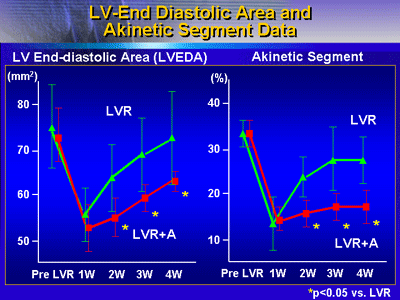
Catheterization at 4 weeks showed that the rats in the ANP
group had significantly lower left ventricular end-diastolic
pressure and Tau. End systolic elastance was higher in the
ANP rats.
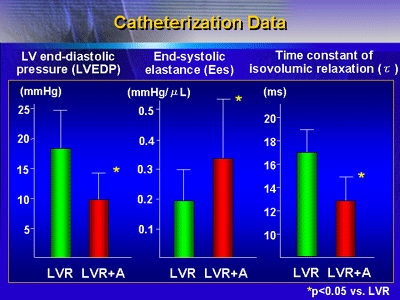
Fibrosis was evaluated with chemical measures and histologically.
The mRNA expression of BNP and TGF-beta 1 (inducer of fibrosis)
was significantly lower in the rats that received ANP. Interstitial
fibrosis at a site away from the repair site was significantly
lower in the rats in the ANP group (based on computerized
analysis, fibrosis involved 3.8 }1.6 percent of myocardium
in ANP group and 7.9}2.8 percent in saline group).
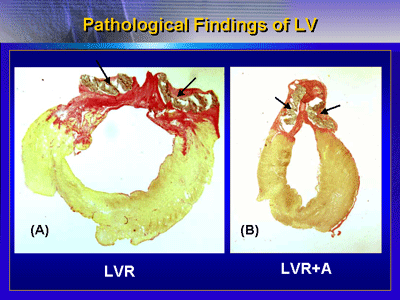
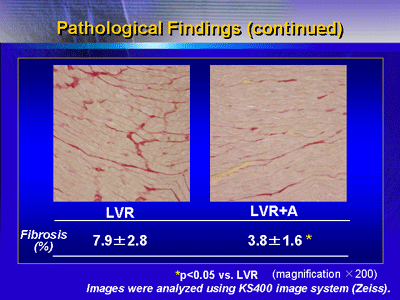
Dr. Tsuneyoshi summarized by concluding that ANP had clear
beneficial effects in the rat model of chronic ischemic cardiomyopathy
and surgical repair up to 4 weeks after left ventricular aneurysm
repair in terms of left ventricle remodeling, function, and
fibrosis. Intravenous ANP may well have a clinical role in
management of patients who undergo left ventricular aneurysm
repair.
|